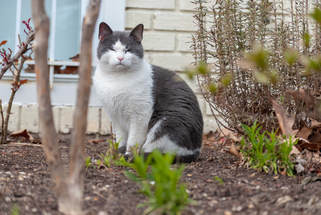 The Western Governors’ Association (WGA) recently released a list of the “Top 50 Invasive Species in the West”. Somehow feral cats were ranked 13th out of the top 25 terrestrial invasive species in the West. WGA specifies that all feral cats, including cats who have been trap-neuter-returned, are included on the list. WGA has been supportive of lethal eradication plans for invasive species and says, “Programs for the control and/or eradication of invasive species must result in more on-the-ground prevention, management and eradication.” Eradication programs continually fail to manage cat overpopulation and inhumanely kill one of our country’s most beloved animals. A study by Faunalytics in 2015 found that 68% of people support TNR for managing community cats while only 24% support eradication. Why is the WGA ignoring the will of the people and scientific studies showing the effectiveness of TNR? ACR has seen firsthand the positive effect TNR can have. Last year, our TNR program and spay/neuter clinic helped reduce cat intake at the Prince George’s County Animal Shelter by 18% and euthanasia rates by 38% in our targeted area. Sign our petition to tell WGA that cats are not an invasive species today: https://www.thepetitionsite.com/takeaction/841/456/513/ If you live in one of these states, click to contact your governor and tell them cats are not an invasive species:
8 Comments
Carmen Spagna
4/13/2018 10:32:18 am
Por favor ayudemos a los gatitos
Reply
Debbie Cook
4/13/2018 07:51:17 pm
Cats are not an invasive species, they are animals and should be treated with care and respect for living creatures.
Reply
Cynthia Altemus
4/13/2018 09:02:15 pm
Stop
Reply
Daphanne
4/15/2018 12:52:31 am
I sent an email, but I'm not sure how far it will go since California politicians are notorious for ignoring what the general population actually wants.
Reply
Bruce Alan Wilson
4/16/2018 06:21:20 am
Cats ARE an invasive species. They are not native to this continent, and have had significant negative impact on native fauna, even driving some to extinction. Much as we love them, it is a fact.
Reply
daniel seyb
4/26/2018 07:20:15 pm
Maybe so. But then, horses, cattle, sheep, goats, honeybees, and most birds also invasive species (at least in North Amreica), and so far no one seems interested in exterminating them, for some reason.
Reply
Leave a Reply. |
Details
AuthorAlley Cat Rescue is leading in the way in promoting humane and compassionate care for ALL cats. Archives
April 2024
Categories
All
|
 RSS Feed
RSS Feed